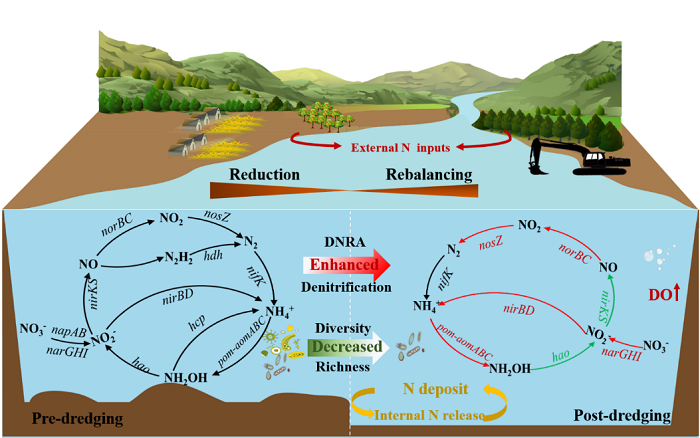Recently, the Innovation Team of Agricultural Clean Watershed from the Institute of Environment and Sustainable Development in Agriculture, CAAS, took a deep dive into the effects of sediment dredging on internal nitrogen release and external nitrogen input in river systems, and revealed the microbial mechanisms whereby dredging influences nitrogen dynamics and transformations in water bodies. The related findings have been published in Water Research , the top journal in the category of water resources according to Journal Citation Reports (JCR).
Although sediment dredging is a widely employed technique for the removal of internal nitrogen in rivers, the long-term effects of dredging on nitrogen transformation in river systems remain largely undetermined. Dredging was found to significantly reduce the total nitrogen content in water bodies in the short term, but there was a slight increase in concentrations over time with continued external nitrogen input. In addition, dredging was found to significantly reduce the richness and diversity of microbes associated with nitrogen transformation processes, increase the abundance of key enzyme activities and denitrification genes, and promote denitrification and dissimilatory nitrate reduction to ammonium (DNRA) processes.

This study overcame the limitations associated with watershed and microenvironment scales through a combination of metagenomic and natural stable isotope technologies. It assessed the impact of dredging activities on nitrogen dynamics, microbial community and function in river ecosystems more comprehensively, providing new insights into the understanding both short-term responses and long-term sustainable management of nitrogen dynamics in river ecosystems.
This study was supported by the National Natural Science Foundation of China.
Linkage:https://doi.org/10.1016/j.watres.2024.122460

